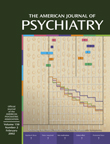This text provides a definitive summary of studies pertaining to intelligence. The book is organized into 28 chapters written by leaders in the field. Earlier chapters consider cross-cultural and sociological perspectives on the definition of intelligence; these are followed by a historical review. Of special importance are the contributions of Spearman and Binet, contemporaries in the early 1900s who set the course for most intelligence research of the last century. The former invented the g theory of intelligence, referring to a hypothesized common general factor that underlies the different manifestations of intelligent behavior. Binet pioneered the development of complex, readily administered tasks to assess intelligence “in the field.” Spearman reveled in unity of mathematical abstraction, while Binet remained fascinated by the extraordinary variation of human potential.
The immense body of studies examining the roles of heredity versus environment in determining intelligence is very ably reviewed in a chapter by Elena Gricorenko. For instance, data based on correlations of intelligence measures for monozygotic versus dizygotic twins support the view of a heritable component. Although effects of rearing clearly influence intelligence, these effects may decline with age, whereas heritable effects appear to increase from childhood to adulthood.
Of special interest to me was Philip Vernon’s chapter reviewing biological correlates of IQ in humans. Head size and brain volume have consistently demonstrated modest positive correlations with IQ. PET studies of brain metabolism have provided evidence that individuals with high IQ demonstrate higher brain activation when at rest, cognitively speaking. In contrast, these same subjects are able to accomplish cognitive tasks with lower expenditures of energy than the population at large. These data suggest that individuals with higher IQ have greater disposable “brain power” that can be allocated more efficiently to specific tasks.
There is a lack of consensus regarding those information processing components which contribute to intelligence. Perhaps the most salient theory has been developed by Robert Sternberg, the book’s editor. His approach is referred to as the triarchic theory of intelligence and assumes that reasoning processes reflect selective encoding of information, comparison with stored information, and novel combination of information retrieved. Other contributing factors, such as information processing speed and strategy searches during problem-solving, are examined in detail in a chapter by David Lohmen.
A related chapter on artificial intelligence by Roger Schank highlights both connectionist (neural network) models as well as algorithmic (symbolic) computer simulations. Artificial intelligence researchers are forced to leave the realm of abstract concepts and wrestle with the myriad of practical challenges associated with forcing a computer not to function like a computer (inflexible and intolerant of ambiguity and error) but with the fluidity and flexibility of human intelligence. I hoped for a more extended discussion of chess-playing computers, the most obvious computer-based challenge to human intelligence. The world champion Garry Kasparov has been defeated by Deep Blue, a supercomputer develop by a team of IBM engineers. Does Deep Blue exhibit “true” intelligence in view of the fact that it can only play chess and has no capacity to perform other tasks? My bias favors a “yes” response, but even if the verdict is “no,” a closer examination of the functional architecture of Deep Blue—it is composed of a very large number of computational modules functioning cooperatively and in parallel rather than a single, standard, sequential processor—may provide key insights into the architecture of human intelligence.
My favorite chapter was one late in the book written by Robert Sternberg on creativity and intelligence. Sternberg describes an investment theory of creativity, postulating that creative people, like good investors, buy low and sell high, with buying and selling taking place in the world of ideas. Creative people generate ideas that have been discarded as having little value, convince the world of their worth, and then let other people do the heavy work of developing them while they “move on to their next unpopular idea.”
A lesson for psychiatry provided by this book is that there is a great deal to be learned about higher-level information processing. This domain is often ignored by our field. Yet so much of what psychiatric disorders appear to be about involves complex information processing such as social cognition and intuitive reasoning. If you doubt this, consider the twisted but often refined intelligence of the delusional person, or the ability of the depressed person to reason himself or herself deeper and deeper into despair.

